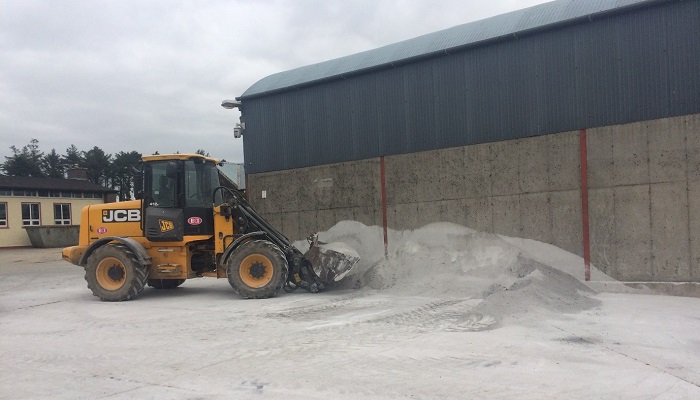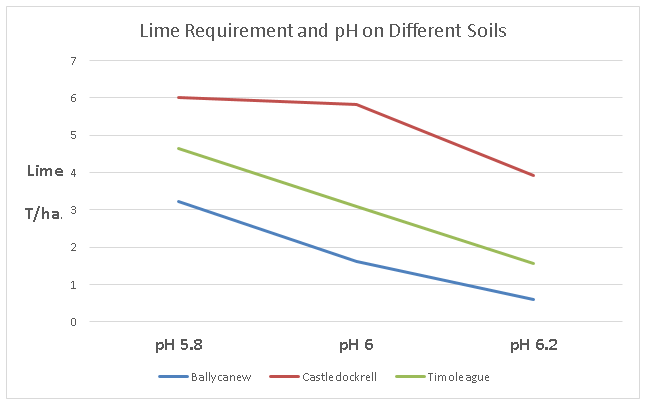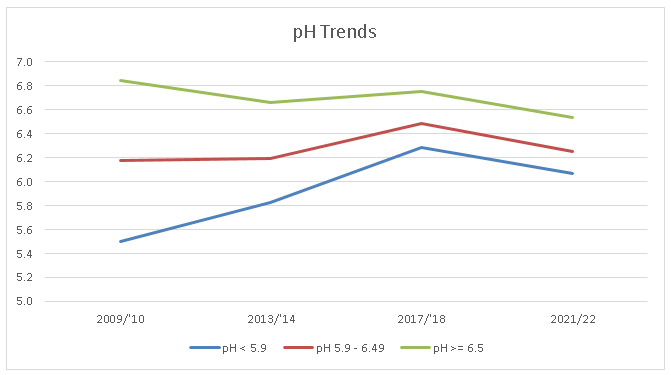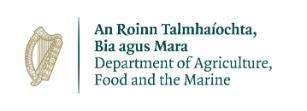22 February 2022
Nutrient Management on farms in the Agricultural Catchments Programme

The level of nutrients in soil, their availability for crop growth plus when and where they are lost from soil to water are all key parts of work in the Agricultural Catchments Programme (ACP). Edward Burgess, Agricultural Catchment Specialist explains soil fertility and the need to lime
Above photo: Lime is continually being lost from soil and needs to be regularly replaced
Understandably, the over 300 farmers with land in the six catchment areas are very interested in this. Soil sampling and analysis is carried out every four years and trends in soil fertility always generate a lot of discussion.
An index system is used to describe soil fertility levels, ranging from index 1 (very low) to index 4 (high). While this is a very useful system which gives a good indication of the response to applied fertiliser, it is important to be aware that not all soils behave the same. Soil pH and lime requirement is a good example of this.
Soil pH
Soil pH can be described as the foundation to good nutrient management. The optimum pH for productive grassland is at or above 6.3 and most tillage ground it is 6.5. Interestingly, potatoes can grow very well below pH 6.0 and you should aim for a pH of 7.0 for beet, beans and peas. Across the six catchments we have very different soil types and the response to lime varies from one to another.
The soil result for lime is often questioned when two different fields with the same soil pH and crop have a very different lime requirement. On first observation this does not seem to make sense. However, it is important to be aware that there are two separate tests, one for pH and one for lime requirement. It is more difficult to change pH in some soils than others, and these are described as having a bigger ‘buffering capacity’.
The graph below shows different lime requirements for the same soil pH in three catchments due to the varying buffering capacity of their soils.

You could say that you need two tonnes of lime in Castledockrell to do the same work as one tonne in Ballycanew!
The current rise in fertiliser prices is a big concern, and may well have an impact on soil fertility levels over the next few years. This adds to the importance of correcting soil pH. Believe it or not, correcting the pH of an acid soil (pH < 5.8) will do more to make Phosphorus (P) available for crop growth than adding P as a fertiliser. And when considering Nitrogen (N), up to 80 kg N / hectare could be released from the soil by applying the appropriate amount of lime.
The good news in the ACP is that the farmers have been correcting this and the pH trend is moving in the right direction. Trends in soil pH all catchments can be seen in the graph below.

In this article I have focused on the different response to lime across diverse soil types. Without question, soil pH is the most important thing to sort before spending money correcting soil Phosphorus (P) and Potassium (K) levels.
But, just as different soils respond differently to lime, the same can be said of the response to P and K fertiliser applications. With this in mind, I recommend that in addition to using the index system to figure out how much fertiliser to apply, it is important to know how your soil fertility levels are changing over time. This should be known on both a field-by-field basis and on the farm as a whole.
In the video below ACP Agricultural Catchment Specialist Edward Burgess & ACP Advisor Oisín Coakley talk about the management of farm nutrients and making best use of soil test results.
Further information
The Agricultural Catchments Programme (ACP) is running a week of social media releases showcasing some of its activities from Monday 21 February to Friday 25 February. The week’s theme is “Working Together for Water Quality”. More details of what is on can be found at www.teagasc.ie/ACPweek22
Acknowledgement
 The Agricultural Catchments Programme (ACP) was established in 2008 and is funded by the Department of Agriculture, Food and the Marine
The Agricultural Catchments Programme (ACP) was established in 2008 and is funded by the Department of Agriculture, Food and the Marine
